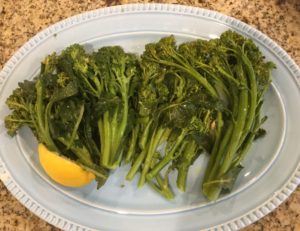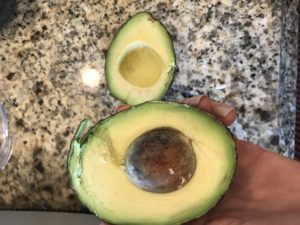Most people fall short on consuming the recommended intake of 25-35 grams of fiber per day, with 5-10 grams coming from soluble fiber. Are you meeting your fiber goal? Women should aim for the lower part of the reference range, and men should get closer to 35 grams of fiber per day.
What is the difference between the types of fiber?
Soluble fiber lowers total cholesterol and LDL cholesterol and is credited in preventing colon cancer. Insoluble fiber helps to prevent constipation. Both types of fiber can improve blood glucose control by delaying gastric emptying after a meal. The best course of action is an intake of a variety of both soluble and insoluble fiber sources to ensure a diverse gut flora. You can make adjustments in the type of fiber for bouts of constipation or diarrhea if necessary.
The Role of Fiber in Net Carbohydrates
Those on ketogenic eating plans like fiber for another reason. Fiber lowers the net carbohydrate; an essential aspect of keto plans. It would be challenging to achieve the carbohydrate goal established for keto diets without a high fiber intake. Net carbohydrate is derived by taking the total grams of carbohydrate minus total grams of fiber. For example, 1/3 of an avocado has 4 grams of carbohydrate and 3 grams of fiber, yielding 1 gram of net carbohydrate per ½ cup serving. https://laurazervos.com/avocado/
Sources of Fiber
Fiber is found in fruits, vegetables, whole grain cereals, and breads. Navy, pinto, and black beans are considered high fiber food sources since they contain more than 4 grams of fiber per serving. Berries and cereals are also excellent sources of fiber. If you include one-half cup of blackberries (4 grams of fiber) and one-half cup of oatmeal (2 grams of fiber) at breakfast, you would be off to a good start!
Still not hitting your mark?
Not one to eat five servings of fruits and vegetables every day? Then it will take a real effort to meet your daily fiber target. If you find that your fiber intake is still not measuring up, it is easy to supplement. Be sure to supplement gradually while increasing fluids at the same time. Increasing fiber without increasing fluids can lead to bloating and constipation. It is best to talk to your doctor or Registered Dietitian before starting a supplement since fiber supplements can decrease the absorption of some medications.

Getting all of the fiber you need to stay healthy requires a little effort, but by adding vegetables and fruits to your meals and snacks and choosing whole grains, it can be done. Feel the difference that fiber can make in your diet, and you’ll stay on the Path to Wellness.

Leave a Reply